I'm normally an R user (a beginning R user, but I'm starting to get the hang of it). However, I have heard positive things about ELKI--in particular, its speed. I came across this old post "How to group nearby latitude and longitude locations stored in SQL" and the answer posted by Anony-Mousse is similar to what I'd like to do. I would like to be able to replicate each step he has done up to the KML file he has shared on Google Drive.
I've downloaded ELKI and am able to run the mini-GUI, which looks like the following:

Could someone post some steps on how to do what Anony-Mousse was able to do?
My data is very similar in nature. I have geocoded addresses in a csv file (more specifically, each tuple is an event and one of the variables/features/columns is the geocoded address of the event) and I'm looking to find clusters much like the OP in the link above.
Hopefully, Anony-Mousse will read this post and come to the rescue. But, I'd be grateful if anyone else could help get me on my way.